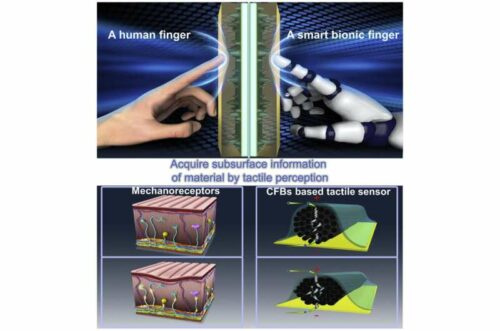Researchers have developed a bionic finger that can mimic the sensing function of a human finger and can perfectly maps anything it touches.

Medical technologies like X-rays, MRI, ultrasound etc, that are used to peek into the human body have been around for quite some time now. But there has never been an alternative to these technologies considering the side effects these technologies can cause. A slightly greater exposure to the x-ray can lead to cancer, MRI can cause a variety of side effects as well as it includes magnetic imaging (absence of radiation reduces risk).
Now what if we could use touch to image the insides of human bodies and electronic devices? Researchers from Wuyi University have developed a bionic finger that can create 3D maps of the internal shapes and textures of complex objects by touching their exterior surface. The inspiration for this device comes from the human finger which we can sense not only the texture of our skin, but also the outline of the bone beneath it.
The bionic finger “scans” an object by moving across it and applying pressure—think of a constant stream of pokes or prods. With each poke, the carbon fibers compress, and the degree to which they compress provides information about the relative stiffness or softness of the object. Depending on the object’s material, it might also compress when poked by the bionic finger: rigid objects hold their shape, while soft objects will deform when enough pressure is applied. This information, along with the location at which it was recorded, is relayed to a personal computer and displayed on screen as a 3D map.
Advancing into further development, they tested the device’s ability to sense simulate human tissue. They created this tissue—consisting of a skeletal component, made of three layers of hard polymer, and a soft silicone “muscle” layer—using 3D printing. The bionic finger was able to reproduce a 3D profile of the tissue’s structure and locate a simulated blood vessel beneath the muscle layer.
Researchers plan to develop the bionic finger’s capacity for omnidirectional detection and therefore opening up a non-optical way for the nondestructive testing of the human body and flexible electronics.
Reference : Jianyi Luo & colleauges, A smart bionic finger for subsurface tactile-tomography, Cell Reports Physical Science (2023). DOI: 10.1016/j.xcrp.2023.101257. www.cell.com/cell-reports-phys … 2666-3864(23)00012-7






